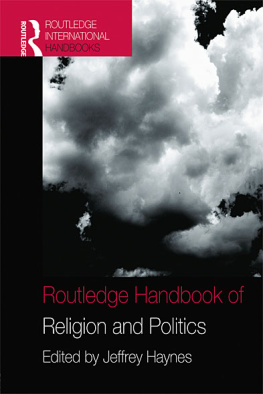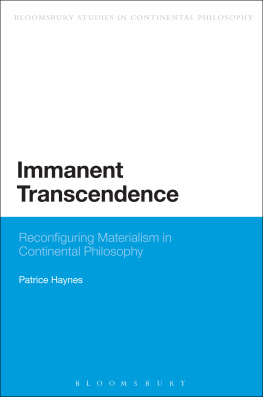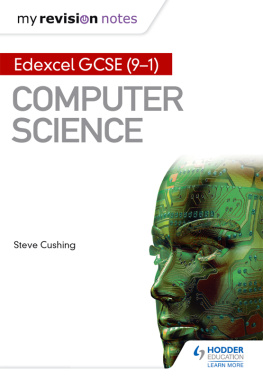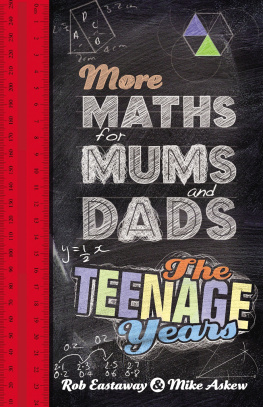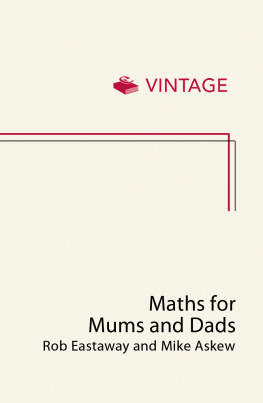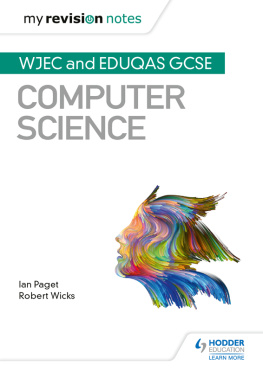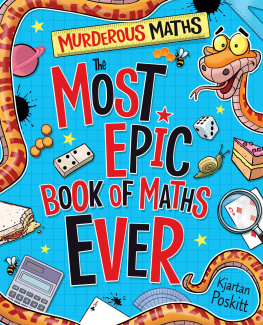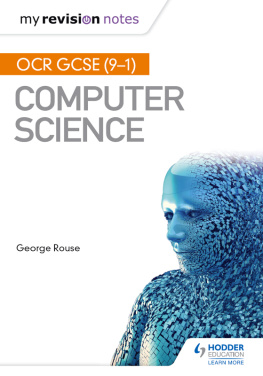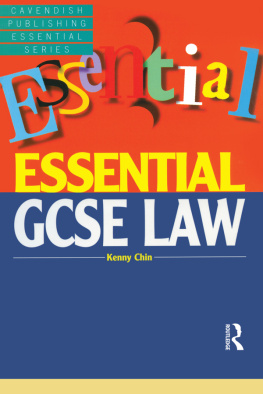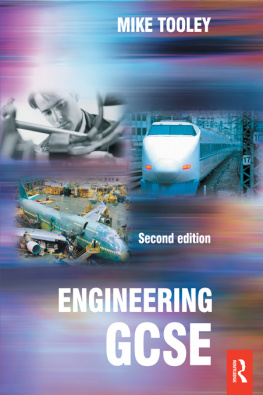Haynes - GCSE Maths Notes
Here you can read online Haynes - GCSE Maths Notes full text of the book (entire story) in english for free. Download pdf and epub, get meaning, cover and reviews about this ebook. year: 2013, publisher: andychains.com, genre: Children. Description of the work, (preface) as well as reviews are available. Best literature library LitArk.com created for fans of good reading and offers a wide selection of genres:
Romance novel
Science fiction
Adventure
Detective
Science
History
Home and family
Prose
Art
Politics
Computer
Non-fiction
Religion
Business
Children
Humor
Choose a favorite category and find really read worthwhile books. Enjoy immersion in the world of imagination, feel the emotions of the characters or learn something new for yourself, make an fascinating discovery.

GCSE Maths Notes: summary, description and annotation
We offer to read an annotation, description, summary or preface (depends on what the author of the book "GCSE Maths Notes" wrote himself). If you haven't found the necessary information about the book — write in the comments, we will try to find it.
Haynes: author's other books
Who wrote GCSE Maths Notes? Find out the surname, the name of the author of the book and a list of all author's works by series.
GCSE Maths Notes — read online for free the complete book (whole text) full work
Below is the text of the book, divided by pages. System saving the place of the last page read, allows you to conveniently read the book "GCSE Maths Notes" online for free, without having to search again every time where you left off. Put a bookmark, and you can go to the page where you finished reading at any time.
Font size:
Interval:
Bookmark:
GCSE MATHS NOTES
A Haynes MSc, Copyright 2005-2018
INTRODUCTION
My GCSE Maths Notes:
- Are self-contained i.e. do not assume prior knowledge of the subject (they are not simply brief revision notes)
- Are somewhat longer than the notes I've provided students with in class, but (deliberately) not as long as typical equivalent textbooks
- They are about 200 sides of A4 if printed out in the webpage format that I wrote them
- Cover the subject content of a UK syllabus I've taught a number of times
- Your syllabus may be different, but a lot of the material will probably still be relevant
The contents of the GCSE Maths Notes is summarised below:
(For clickable links, view ):
- Part 1: NUMBER - Numbers, Money - Chapters 1 - 6
- Part 2: ALGEBRA - Algebraic expressions & relationships, Graphs - Chapters 7 - 12
- Part 3: SHAPE, SPACE AND MEASURES - Chapters 13 -20
- Part 4: HANDLING DATA - Statistics, Probability - Chapters 21 - 24
Note - if you're not familiar with UK qualifications - GCSEs are typically aimed at 14-16 year olds
Note - Some ebook (kindles etc.) readers (including phones) auto-shrink some items on screen:
- If something looks very small on your device (an image , an equation or text ) - you may be able to:
- Enlarge it by (double) clicking it - and (double) click it again to shrink it
GCSE Maths Notes
Copyright 2005-2018 A Haynes
GCSE MATHS NOTES
A Haynes MSc, Copyright 2005-2018
TABLE OF CONTENTS
Part 1: NUMBER
Numbers
- - Types Of Numbers; Directed Numbers;
The Decimal System - - Number Patterns; Factors And Multiples; Fractions
- - Percentages; Indices; Roots
- - Standard Form; Approximations;
Proportional Division; Direct And Inverse Proportion
Money
- - Pay; Tax; Household Expenses
- - Credit; Savings - Compound Interest; Travel
Part 2: ALGEBRA
Algebraic expressions & relationships
- - Using Symbols; Simplifying Algebraic Expressions;
Factorising Algebraic Expressions - - Algebraic Fractions; Equations;
Simultaneous Equations; Formulae - - Quadratic Equations; Finding A Solution
By Trial And Improvement; Inequalities; Flow Charts
Graphs
- - Cartesian Coordinates; Straight Line Graphs;
Parabolas; Cubic Functions; Rectangular Hyperbola; Exponential Functions - - Solving Equations Using Graphs; Equations
Changed To Linear Graphical Form; Transformation Of Functions/Graphs;
Graphs And Inequalities - - Travel Graphs
Part 3: SHAPE, SPACE AND MEASURES
Shape
- - Angles And Lines; Polygons
- - Congruence And Similarity; Symmetry; Circles;
Geometrical Constructions - - Trigonometry
Space
- - Bearings; Angles Of Elevation And Depression;
Scales; Loci; Tessellations - - Vectors
- - Transformations
Measures
- - Units; Areas Of Plane Surfaces; Volumes Of Cubes
And Cuboids - - Areas And Volumes Of Various 3D Objects;
Dimensions And Formulae
Part 4: HANDLING DATA
Statistics
- - Terminology; Representing Data Visually;
Statistical Surveys - - Averages; Dispersion Of Data
- - Frequency Distributions;
Grouped Frequency Distributions
Probability
- - Basic Ideas; Range Of Probabilities;
Total Probability; Mutually Exclusive Events - The Addition Law;
Independent Events - The Multiplication Law; Probability Tree;
Experimental Probability; Conditional Probability
GCSE Maths Notes
Copyright 2005-2018 A Haynes
Numbers (Chapters 1 to 4)
Chapter 1
- Please Note - If an image , an equation or text appears very small on your device - you may be able to:
- Enlarge it by (double) clicking it - and (double) click it again to shrink it
TYPES OF NUMBERS -
Numbers fall into certain groups, some of which are given names:
- Counting numbers : 1, 2, 3, 4, ...............
- Natural numbers : 0, 1, 2, 3, 4, ..............
- Integers : .........., -4, -3, -2, -1, 0, 1, 2, 3, 4, .........
The above series of numbers all continue indefinitely.
- Rational numbers are those which can be expressed as fractions, i.e. one number divided by another
Since dividing any number by 1 leaves the number unchanged, all the above numbers are rational numbers because we could express each one as, for example:
- 1/1, 2/1, 3/1 etc.
The following are also rational numbers:

Some numbers cannot be expressed as exact fractions. For example, we say that the square root of 9 is 3, because 3x 3=9. But what about the square root of, for example, 2? On the calculator you will get something like:

The decimal places carry on forever without repeating, which means that the number cannot be expressed as a fraction, i.e. it is not a rational number. Hence, we describe the square root of 2 is an irrational number .
- Rational and irrational numbers together form what are called real numbers
Any real number, rational or irrational, can be located on the real number line - this is represented below - it extends forever to right and left:
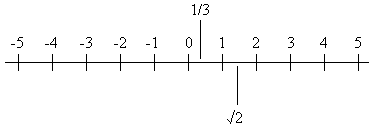 Changing a recurring decimal into a fraction
Changing a recurring decimal into a fractionThis is illustrated with a couple of examples:
Example

Example

Arithmetic
Arithmetic is the branch of maths concerned with numerical calculations.
There are four basic operations with numbers :
- Addition , which produces the sum of two numbers:
The sum of 2 and 5 equals 7, which we write as: 2 + 5 = 7
- Subtraction , which produces the difference between two numbers:
The difference between 9 and 5 is 4, which we write as: 9 - 5 = 4
- Multiplication , which produces the product of two numbers:
The product of 3 and 4 is 12, which we write as: 3 * 4 = 12
[Again note that we here use the star (*) to stand for 'times' or 'multiply by' - whereas by hand we would usually write a cross (x )]
- Division , which produces the quotient of two numbers:

DIRECTED NUMBERS -
Directed numbers are positive or negative numbers. When you add, subtract, multiply or divide directed numbers, you are moving from one point to another along the number line:
Next pageFont size:
Interval:
Bookmark:
Similar books «GCSE Maths Notes»
Look at similar books to GCSE Maths Notes. We have selected literature similar in name and meaning in the hope of providing readers with more options to find new, interesting, not yet read works.
Discussion, reviews of the book GCSE Maths Notes and just readers' own opinions. Leave your comments, write what you think about the work, its meaning or the main characters. Specify what exactly you liked and what you didn't like, and why you think so.

